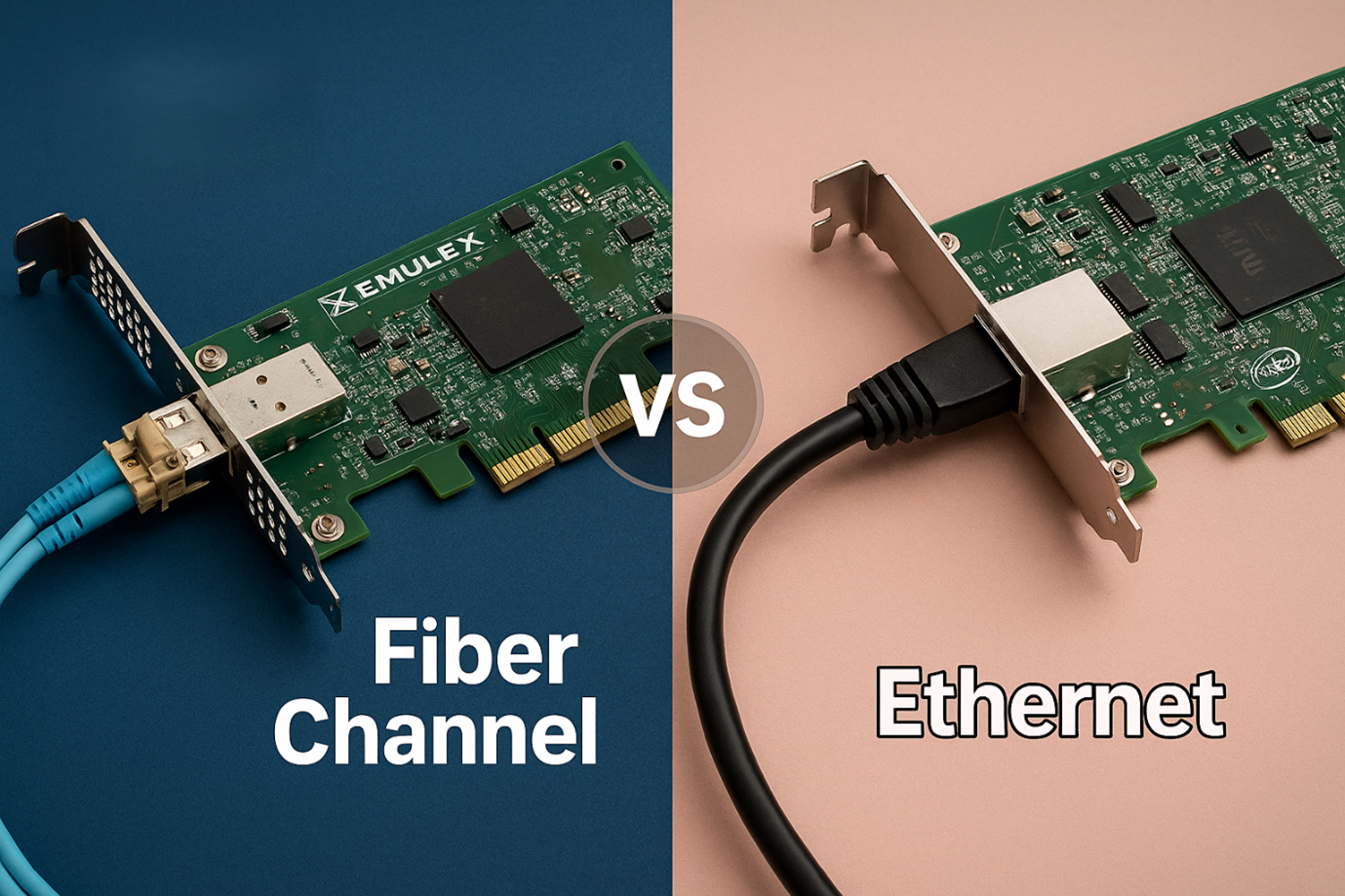GDDR6 vs GDDR6X: Understanding the Differences in Graphics Memory
Let’s talk about the latest technology in the memory sphere, and no, we do not mean GDDR 7. GDDR 7 might be unavailable for a few more years because of the chip shortage. This feature is about GDDR6, GDDR6X, and GDDR6 vs GDDR6X. People have been asking, after all what the difference is because when they search online, all they get is that the difference is minimal or that there is just the bandwidth difference in width.
It isn’t that minuscule. If the manufacturers have released an update, there must be some thought behind it. Also, the price difference is there, so one needs to know where to invest. When comparing GDDR6 vs GDDR6X, both GPU memories are able to handle 4K gaming and heavy video editing work. However, GDDR6X is more capable on paper (it has to be), but where do you need the extra power to use it? That is the question.
We will lay out the facts and figures for you to understand and decide according to your requirements. Moreover, to educate you comprehensively, we will define each memory type along with another type, HBM memory.
GDDR vs DDR: Understanding Each of Them
To understand the difference between GDDR vs DDR, remember:
- DDR = Double Data Rate
- GDDR = Graphics Double Data Rate
The addition of “G” or “Graphics” does not mean they are the same thing with a slight difference. These respective architectures are different in speed, bandwidth, speed, and power. Yes, graphics should be added for understanding, as it was developed for GPUs while the DDR technology was developed for CPUs. The foundational memory used in every device (desktop, laptops, graphics processing units) is SDRAM, and the GDDR6 SDRAM is the full name. This name stands for graphics double data rate type 6, synchronous dynamic random-access memory.
Let Us Explain DDR

DDR memory is not slow compared to GDDR, but they differ in performance features. DDR has lower latency, while GDDR has more bandwidth. Lower latency translates to faster access of CPU to memory. It is required by the CPU to perform important tasks like OS management, application execution, instruction response, and also commanding the GPU to perform certain tasks and calculations.
Again, speed and latency are different things, and DDR is capable of reaching high speeds. For you to understand, let us explain what latency is;
Latency: In memory, it is the time difference between when the memory receives the instructions and executes them.
Speed is the data transfer rate, and the latest memory is DDR5, which has data transfer rates ranging from 4800 to 8400 mega transfers per second (MT/s). These units are often mentioned after the RAM specifications, like DDR5-7200 CL32. The “CL32” is of our interest as it references latency.
There is no unit beside or after the number 32 because it is not measured in seconds. The full form is CAS (column address strobe) latency, which translates to the time difference measured in clock cycles between a read command issued to the CPU and its completion. This primary parameter is of utmost importance because it relates the speed to the performance of a memory module.
Now, to understand the clock cycle, let’s take the provided value CL32. CL32 means the memory module will take 32 clock cycles to provide the data once it has received the command. So, the lower the CL value, the better the performance. Note that DDR4 RAM DIMMs have CAS Latency as low as CL16, while DDR5 DIMMs have CL30. No worries! DDR5 has higher frequency/transfer rates.
| DDR Generation | Frequency | CAS Latency |
|---|---|---|
| DDR4 | 3200 MT/s | CL16 |
| DDR4 | 3600 MT/s | CL18 |
| DDR5 | 5200 MT/s | CL38 |
| DDR5 | 6000 MT/s | CL40 |
| DDR5 | 6400 MT/s | CL32 |
Bandwidth in GDDR

Bandwidth and bus size are differentiators between DDR and GDDR. GDDR6 memory has higher bandwidth, which GPUs primarily require, and GDDR6X is the upgraded version utilized by top-tier Nvidia GPUs like 4090. A larger bit bus and more bandwidth are necessary to avoid bottlenecks because GPUs handle larger amounts of data, like in math calculations, and provide parallel data. Without a larger bit bus and broader bandwidth, it would be difficult to load visuals and do content creation tasks.
Memory bandwidth refers to the rate at which data can be read from or written to RAM by the processor. It is a crucial performance metric, especially in data-intensive tasks. Bandwidth is influenced by the memory’s clock speed and its bus width. For instance, DDR (Double Data Rate) technology transfers data on both the rising and falling edges of the clock signal, effectively doubling the transfer rate. Higher bandwidth means more data can be processed per second, leading to faster application performance and smoother multitasking.
Calculation of Bandwidth
The bandwidth of a memory module can be calculated using the formula:
Bandwidth (in bytes per second) = Transfer Rate (in MT/s) x Bus Width (in bytes)
For example, if the memory operates at 3200 MT/s (mega transfers per second) and uses a 64-bit bus, the bandwidth can be calculated as:
3200MT/s × 64bits ÷ 8bits/byte = 25600MB/s
Let’s Get Into GDDR6 VS GDDR6X
From a supercomputer to a small computer present in a microwave, it uses computer memory to execute a set of instructions. There are two types of memory, HDD and Solid State Drive being permanent, and RAM, which is the temporary physical memory. The storage is a long-lasting but slower memory, while RAM (DDR and GDDR) is the faster memory that helps the computer perform quickly by erasing and rewriting instructions.
The GDDR memory is the type of memory used by graphics cards. Think of it as the RAM for GPUs. It will be more easy to understand this way.
The numbers and letters after the name GDDR denote the memory type’s iteration, variants, or upgrades. Higher the number recent the generation. The alphabet after the number tells the iteration of that particular generation. As for the GDDR6 memory, the most advanced type with iteration is GDDR6X. Though GDDR7 has been announced, it is still in the development phase.
What Does GDDR6 Mean?

It means Graphic Double Data Rate 6 Synchronous Dynamic Random Access Memory, GDDR 6 is an acronym. GDDR6 memory, introduced in 2018, is the latest advancement from the previous generation of GDDR5 and is used in heavy-duty graphics cards and high-performance computer performance.
It offers a data transfer rate between 12 Gbps and 16 Gbps per pin. Compared to earlier versions, it operates at a reduced voltage of approximately 1.35V, helping minimize power consumption and deliver higher performance.
The architecture of GDDR6 utilizes dual-channel to effectively double the data rate without a corresponding increase in clock speed. The cost-effective GDDR6 speed makes it ideal for consumer-grade graphics cards, gaming consoles, and systems that require high bandwidth and speed but are sensitive to power consumption and cost.
GDDR6 is currently found in everything, including high-end PCs, PS5s, and the latest Xbox consoles.
Explaining GDDR6X

GDDR6X was developed by Micron in collaboration with Nvidia to take a step further in the advancement of graphics memory technology. It is specifically designed to cater to the highest performance needs through a maximum data transfer rate of 21 Gbps per pin. It uses a sophisticated PAM4 (Pulse Amplitude Modulation) signaling method, which is more advanced than the PAM2 technology of GDDR6. GDDR6X can transmit 4 bits of data per cycle, more than 2 bits per second of GDDR6. Hence, the number that mentions the bits also means PAM4 in GDDR6x doubles the bandwidth without increasing the clock rate.
Its higher performance does not make it energy-hungry, a marginal plus point for GDDR6X. Thanks to its innovative encoding techniques and optimized electrical characteristics, GDDR6X maintains energy efficiency comparable to GDDR6. These qualities make the GDDR6X particularly well-suited for top-tier graphics applications, including advanced gaming graphics, professional visualization, and AI-driven data centers.
Differences in GDDR6 vs GDDR6X
| Feature | GDDR6 | GDDR6X |
| Speed | 12 Gbps to 16 Gbps per pin | Up to 21 Gbps per pin |
| Technology | Dual-channel architecture | PAM4 signaling technology |
| Encoding | PAM2 (Pulse Amplitude Modulation 2) | PAM4 (Pulse Amplitude Modulation 4) |
| Applications | Consumer graphics, gaming consoles | High-end graphics, professional GPUs |
| Bandwidth | High, but lower than GDDR6X | Highest available, surpassing GDDR6 |
| Power Efficiency | Improved over previous generations | Maintains efficiency despite higher speed |
| Cost | Generally lower | Tends to be higher due to performance |
To help you understand more, we have created a table below comparing the NVIDIA GEFORCE RTX 4080 16GB GDDR6X GRAPHICS CARD with the FOUNDERS EDITION NVIDIA GEFORCE RTX 4090 24GB GDDR6X GRAPHICS CARD. This will help you understand where the GDDR6X stands if you have to choose between two GPUs that have GDDR6X.
NVIDIA GeForce RTX 4080 vs RTX 4090 Founders Edition
| Feature | RTX 4080 16GB GDDR6X | RTX 4090 24GB GDDR6X (Founders Edition) |
| CUDA Cores | 9,728 | 16,384 |
| Memory | 16GB GDDR6X | 24GB GDDR6X |
| Memory Bus Width | 256-bit | 384-bit |
| Base Clock | 2.2 GHz | 2.2 GHz |
| Boost Clock (Advertised) | Up to 2.6 GHz | Up to 2.5 GHz |
| Tensor Cores | 320 4th Gen | 512 4th Gen |
| RT Cores | 76 3rd Gen | 128 3rd Gen |
| TDP (Typical Board Power) | 320W | 450W |
Performance
- The RTX 4090 offers higher performance in most games, typically around 10-13% faster.
- The performance difference can be more considerable at higher resolutions (4K and above).
Other Factors
- The RTX 4080 has a lower power consumption and may be easier to cool in a PC case.
- The RTX 4090 has a higher power consumption and may require a more powerful PSU.
- The RTX 4090 has more VRAM memory, which may benefit future games or professional applications.
- The RTX 4090 might also require a larger PC case due to its size.
- The RTX 4080 may be more affordable.
Recommendation
- For most gamers, the RTX 4080 will offer excellent performance and better value for money.
- The RTX 4090 is the best option for those who need the absolute best performance, work with high-resolution textures in demanding applications, or plan on keeping their graphics card for many years.
What Is Better for 1080p and 1440p Gaming, GDDR6 or GDDR6X?
It cannot be a straightforward answer like this is better for 1080p and that is good at 1440p. Because the technical answer is complex, it defers from the practical answer and real-world application. But let us give you both.
First, we will start with the technical answer. GDDR6X is better because it is supposed to be better, which is why it was upgraded. The Micron-Nvidia collaboration designed it to have more speed and power to easily excel at 1080p and 1440p gaming.
However, it was designed to be better doesn’t mean it will always be. The betterment comes at a higher price tag and it can make an average PC building expensive. Even GDDR5 can handle 1080p and 1440p gaming till certain point, so GDDR6 can easily handle most of the 1080p and 1440p gaming.
Moreover, the question of which one is better? GDDR6X is better, yes, but only when you require when GDDR6 is not able to handle the gaming tasks.
What Is HBM Memory?

High-bandwidth memory (HBM) is the abbreviation for GDDR6. It has a larger memory bus width than GDDR6, which allows it to transfer larger data packages at once. A single HBM memory chip is slower than a single GDDR6 chip, but the wider bus width, combined with smaller capacity and scalability, makes it more efficient and quicker. HBM3 is the most advanced version of the HBM memory, and you can find it in the NVIDIA H100 80GB SXM5 Tensor Core GPU. Another PCIe version of the NVIDIA H100 80GB Tensor Core GPU has the HBM2 version.
Read More: Redefining AI Performance: An In-depth Review of the NVIDIA H100 Tensor Core GPU
HBM2 vs GDDR6

HBM is a memory designed to push the memory even further, and this is why many applications do not even require it. For example, the NVIDIA RTX 6000 ADA GPU is equipped with GDDR6 and can easily handle most of the workloads. It is arguably the fastest RTX Ada GPU with GDDR6 to achieve small to medium AI training, analytics, rendering, simulation, and data-intensive tasks with 960GB/s high memory bandwidth. If you put multiple GPUs in a server or workstation, you can split up the work to make it go faster, especially if your task can be divided into smaller parts.
GPUs that possess HBM memory, such as the Nvidia A800 80GB HBM2e Graphics Card and NVIDIA H100 Tensor Core GPU, boost productivity significantly. However, this significant boost comes at a higher price tag, and enterprises that value time-saved, more performance and less waiting, deploy these. Simulation tasks such as computational fluid dynamics (CFD), mechanical stress analysis, AI training, and real-time data analytics, which heavily rely on fast memory access, can benefit from the NVIDIA A800 80GB Active’s rapid access to HBM.
We have laid out a table of premium NVIDIA GPUs, comparing their type, memory, bus width, and bandwidth speed.
| GPU | Memory Type | Memory Bus Width | Memory Bandwidth |
|---|---|---|---|
| NVIDIA H100 80G SXM5 | HBM3 | 5120-bits | 3350 GB/s (3.35 TB/s) |
| NVIDIA H100 80GB PCIe | HBM2e | 5120-bits | 2039 GB/s (2 TB/s) |
| NVIDIA A800 40GB Active | HBM2 | 5120-bits | 1555 GB/s (1.5 TB/s) |
| NVIDIA L40S | GDDR6 | 384-bits | 864 GB/s |
| RTX 6000 Ada | GDDR6 | 384-bits | 960 GB/s |
| GeForce RTX 4090 | GDDR6X | 384-bits | 1008 GB/s (1 TB/s) |
FAQs
What does GDDR6 mean?
GDDR means or stands for graphic double data rate 6. It is the type of memory used in graphics cards. The number represents the generation, higher number represents the latest generation.
What is HBM2 memory?
HBM2 (High Bandwidth Memory 2) is an advanced type of HBM memory technology used in GPUs and other high-performance computing devices, offering increased bandwidth and energy efficiency compared to traditional memory types.
What is GDDR6 RAM?
GDDR6 RAM is present in GPUs and works as memory for graphics cards. It provides fast data transfer rates, enabling smooth performance in gaming, graphics rendering, and other intensive tasks.
What is the difference between GDDR6 and GDDR6X?
The major difference between them is the iteration of the generation defined by the letter, in this case, X. X defines:
- 21 Gbps per pin in comparison to 16 of GDDR6
- PAM4 technology in contrast to dual-channel architecture
- Highest available bandwidth at the same clock speed as GDDR6
- Less power consumption for the same clock speed
- More costly due to complex design and higher production costs
If you want to know more, please head back to this section.
How fast is GDDR6?
GDDR6 memory boasts impressive speeds, reaching a maximum data rate of 16 Gigabits per second (Gbps). However, you might see this advertised in different ways, so here’s a quick breakdown:
- 16 Gbps: This is the core data transfer rate per pin.
- Double Data Rate (DDR): Since data is transferred on both the rising and falling edge of the clock signal, you can effectively double the bandwidth. In GDDR6’s case, this translates to 32 Gigabytes per second (GB/s) of theoretical peak bandwidth.
Remember: This is the maximum potential. Real-world performance can vary depending on factors like the memory bus width and the specific implementation in a graphics card.
What is GDDR6X?
GDDR6X is a high-performance upgrade to GDDR6 memory, specifically designed for graphics cards. It achieves:
- Faster speeds by utilizing a more advanced signaling technique (PAM4) that transmits two bits of data per clock cycle compared to GDDR6’s single bit. This translates to potentially double the effective bandwidth at similar clock speeds.
- Smoother gameplay through increased bandwidth, allowing faster data transfer between the graphics card and memory especially in high-resolution or demanding titles.
- Improved Performance for applications that rely heavily on textures and fast data access, like video editing and high-resolution rendering.
Conclusion
There you have it—a significant but slight difference between GDDR6 vs GDDR6X. The difference is in the data transfer rate per pin, which is 21Gbps/pin of GDDR6X and 16Gbps/pin of GDDR6. Also, the signaling technology is different. The GDDR6 uses a dual-channel architecture with NRZ (Non-Return to Zero) signaling, and the GDDR6X employs PAM4 (Pulse Amplitude Modulation 4-level) signaling. However, the price and availability are important factors to consider before going for anyone.
GDDR6X is better as it provides higher bandwidth at the same clock speed as GDDR6 resulting in lower power consumption but with a higher price tag. At the same time, GDDR6 can also handle almost all the tasks. So, which one do you need? Feel free to contact us to help yourself.
Do you need advice on buying or selling hardware? Fill out the form and we will return.

Sales & Support
(855) 483-7810
We respond within 48 hours on all weekdays
Opening hours
Monday to thursday: 08.30-16.30
Friday: 08.30-15.30








